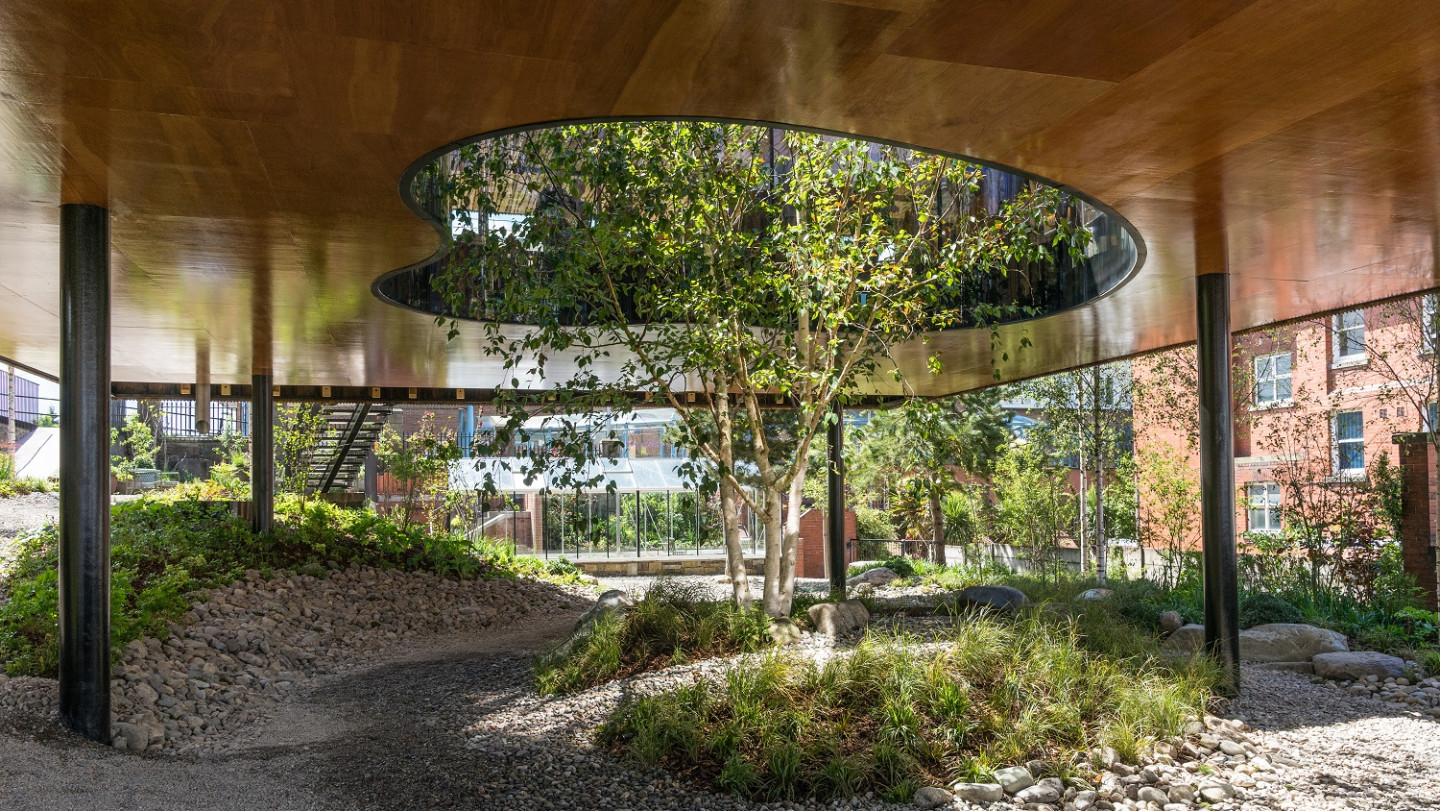As urbanisation increases, how can we design architecture in urban environments to exert the same effect as living near green spaces?
Although the theory that the environments we reside in have an impact upon our well-being is not a new one, recent studies report overwhelming evidence suggesting a direct link between green spaces and human health conditions — meaning that increased access to natural spaces lessens the chance of disease.
Research from leading universities and the Rockefeller Foundation have linked environmental conditions to human health; for example, air quality has been found to be correlated with respiratory disease and deforestation is linked to malaria.
A study undertaken by Beth Israel Deaconess Medical Centre in Boston followed 2,000 patients who were admitted to hospital after having a stroke. Once the patients had recovered and went home, the researchers characterised the neighbourhood in which they lived.
After following the patients for 12 years, the study found that those who lived in greener spaces — gardens, parks and forests — were healthier and 10% more likely to have survived over the course of the study.
As urbanisation increases and as most people spend their time indoors, how can we design architecture in urban environments to exert the same effect as living near green spaces?
Ongoing studies suggest that the materials we use inside our buildings also have a direct link to our health and well-being — for example, a report by Planet Ark Environmental Foundation found that people feel less stressed in timber-clad buildings.
Although research hasn’t fully identified the biological and psychological mechanisms which result in this effect, aligning the built environment with natural materials lowers people’s heart rate and aids the speed of recovery after surgery and illness.
With this research in mind, it is no great surprise that architecture designed for health such as ‘Maggie’s Centres’ are being constructed with sustainable, natural materials such as cross-laminated timber (CLT).
Maggie’s Centres are buildings across the UK and abroad designed to support cancer patients and are the legacy of Margaret (Maggie) Keswick Jencks, an architect who developed terminal cancer in her lifetime.
Maggie believed that good architecture could improve cancer treatments and — in contrast to the concrete-clad hospital buildings flooded with fluorescent lights — she explored how private, light-filled spaces built with natural materials could improve patient’s well-being.
Maggie and her husband, Charles Jencks, founded Maggie’s Centres with this in mind, and as a result, today, 22 Centres across the UK have been designed by different architects, all of which encompass Maggie’s fundamental concern for well-being into their structure.
Designed by dRMM Architects, Maggie’s Oldham is the world’s first cross-laminated timber building.
Equipped with private and (naturally) well-lit spaces, the inside and outside of the building is clad in tulipwood timber.
As patients undergoing cancer treatments such as chemotherapy often feel discomfort when touching metal, the tulipwood is fashioned into the smaller details, such as the door handles and tables.
The building is also incorporated with American Hardwood’s white oak, and the combination of sustainable wooden materials makes Maggie’s Oldham a manifesto for sustainable architecture for health.
The look, texture and the smell of the timber aids well-being whilst the incorporation of timber tables and stairs gives the Centre the appearance of a home.
Although research is ongoing to identify why natural materials have a beneficial effect upon people, it could be due to the deep-rooted connection between humankind and the natural world as the proximity to natural landscapes, plants and animals decreases stress levels.
As humans have long been selective of their habitat, the objects, sounds and textures we live in signifies survival and well-being. For early humans, increased density of green spaces marked concealment from predators and an opportunity for food and shelter.
The use of natural materials indoors and outdoors subconsciously reminds us of natural landscapes and create a relaxing and restorative setting to recover from stress and fatigue.
As stress accelerates and often accounts for many mental and physical diseases, the ongoing research which aims to identify the health and well-being benefits points to huge potential for social change.
To view more about Maggie's Centres, visit their website.
